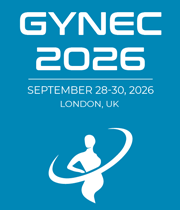Title : Prevalence and survival outcomes of L1CAM-positive in endometrial cancer across molecular subtypes: A systematic review and meta-analysis
Abstract:
Objective: L1 cell adhesion molecule (L1CAM) has emerged as a potential prognostic biomarker in endometrial cancer. This systematic review and meta-analysis aimed to comprehensively evaluate the prevalence of L1CAM expression across molecular subtypes of endometrial cancer and its prognostic significance for survival outcomes.
Methods: A systematic literature search of PubMed, Embase, and Cochrane Library was conducted following PRISMA guidelines. Eligible studies reporting L1CAM expression in endometrial cancer, stratified by molecular subtypes (POLE, MMR-D, NSMP, p53wt, p53abn), and their association with survival outcomes were included. Pooled prevalence and hazard ratios with 95% confidence intervals were calculated using random-effects models.
Results: Twenty-one retrospective studies met the inclusion criteria. The overall pooled prevalence of L1CAM positivity was 15%. Stratified by molecular subtype, prevalence was lowest in POLE-mutated tumors (4.87%), while higher rates were observed in p53abn tumors (52.86%), followed by MMR-D tumors (52.16%), NSMP (30.88%), and p53wt (25.99%). L1CAM positivity was significantly associated with worse disease-specific survival (HR of 2.49, 95% CI: 1.75 to 3.55) and progression-free survival (HR 2.50, 95% CI: 1.56 to 4.01). Subgroup analyses revealed significant associations in MMR-D tumors (HR 1.75, 95% CI: 1.06–2.89), NSMP tumors (HR 5.41, 95% CI: 2.92–10.03), and a borderline effect in p53abn tumors (HR 1.69, 95% CI: 1.00–2.85).
Conclusion: The highest prevalence of L1CAM was found in p53abn endometrial tumors. L1CAM positivity is associated with poor survival outcomes, particularly in MMR-D and NSMP subgroups. These findings highlight the potential of L1CAM as a prognostic biomarker that could refine risk stratification and guide personalized management, warranting validation in prospective studies.




